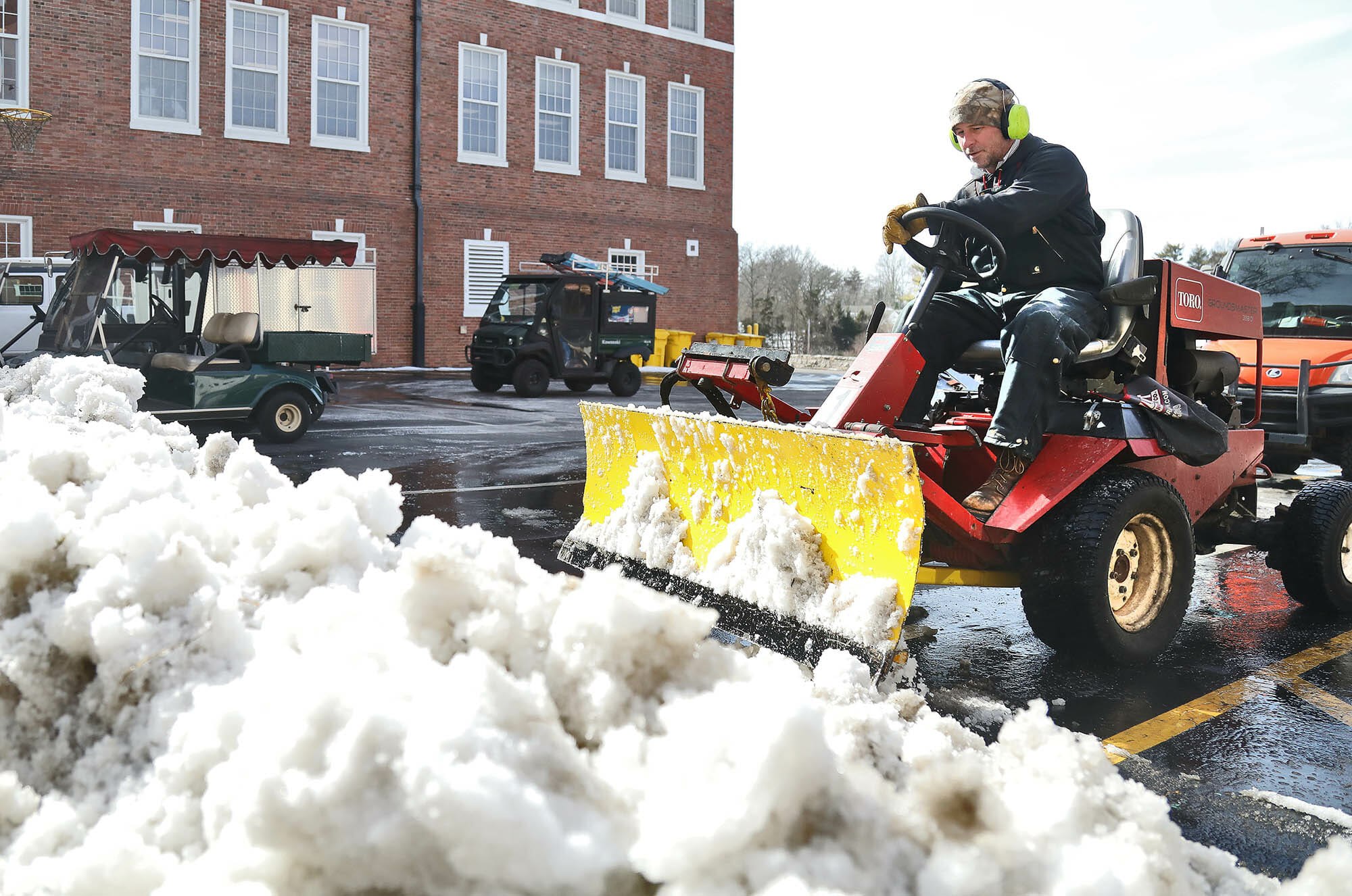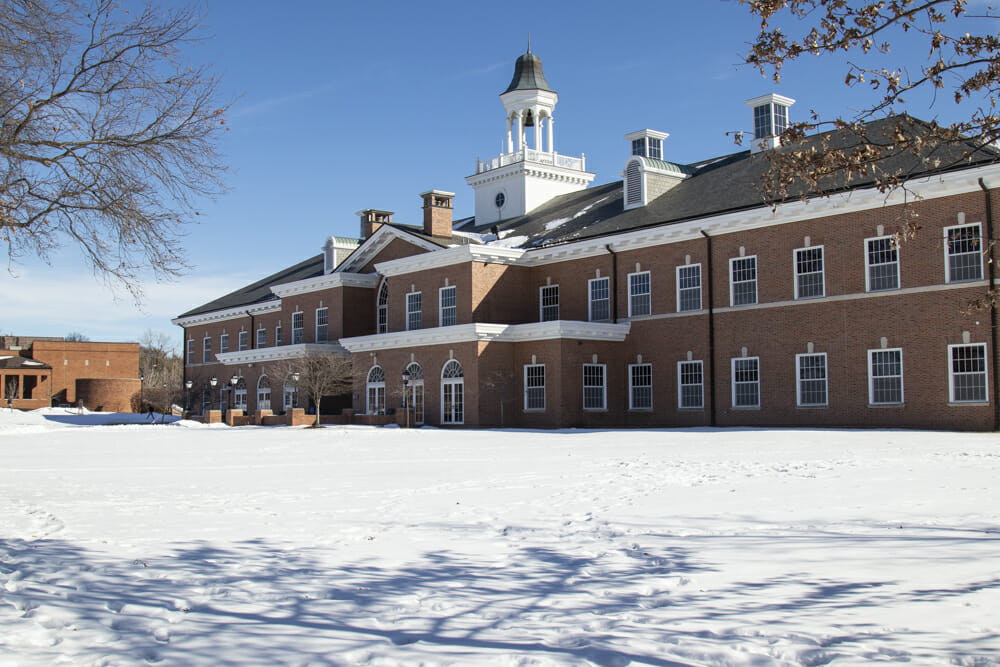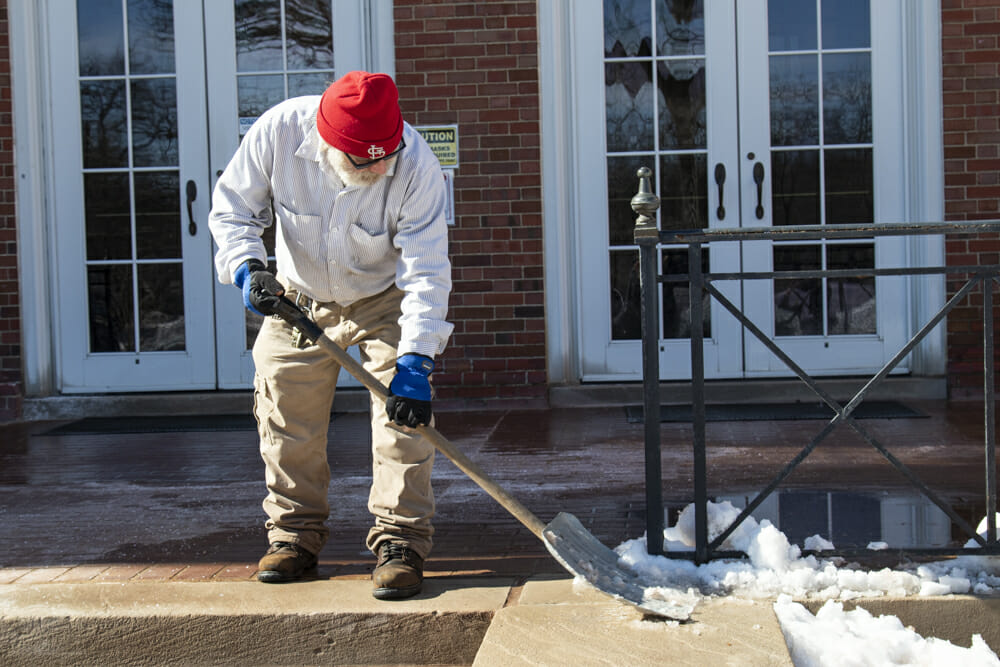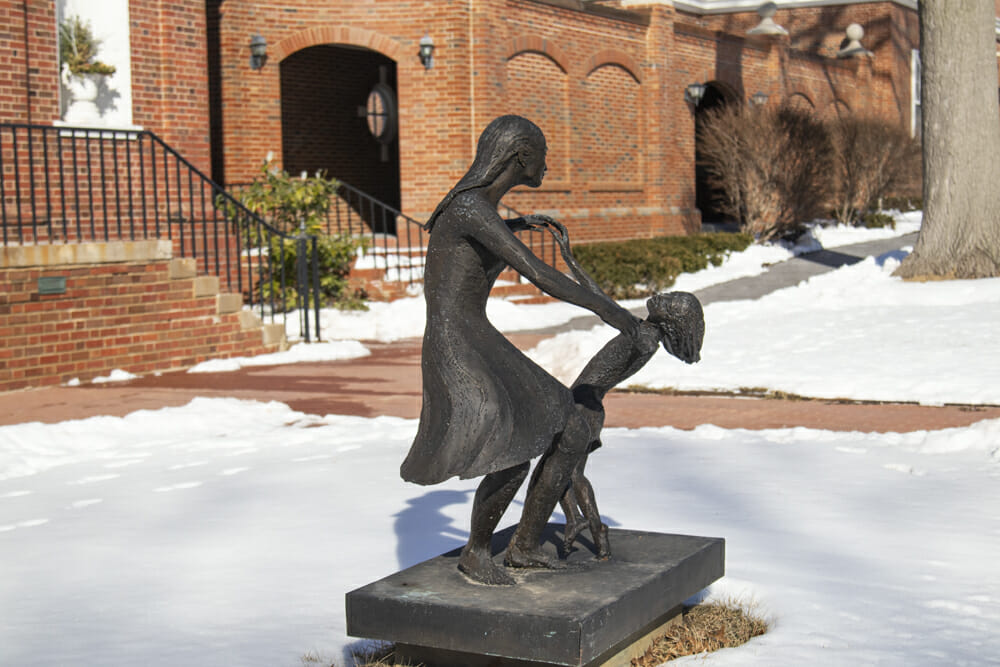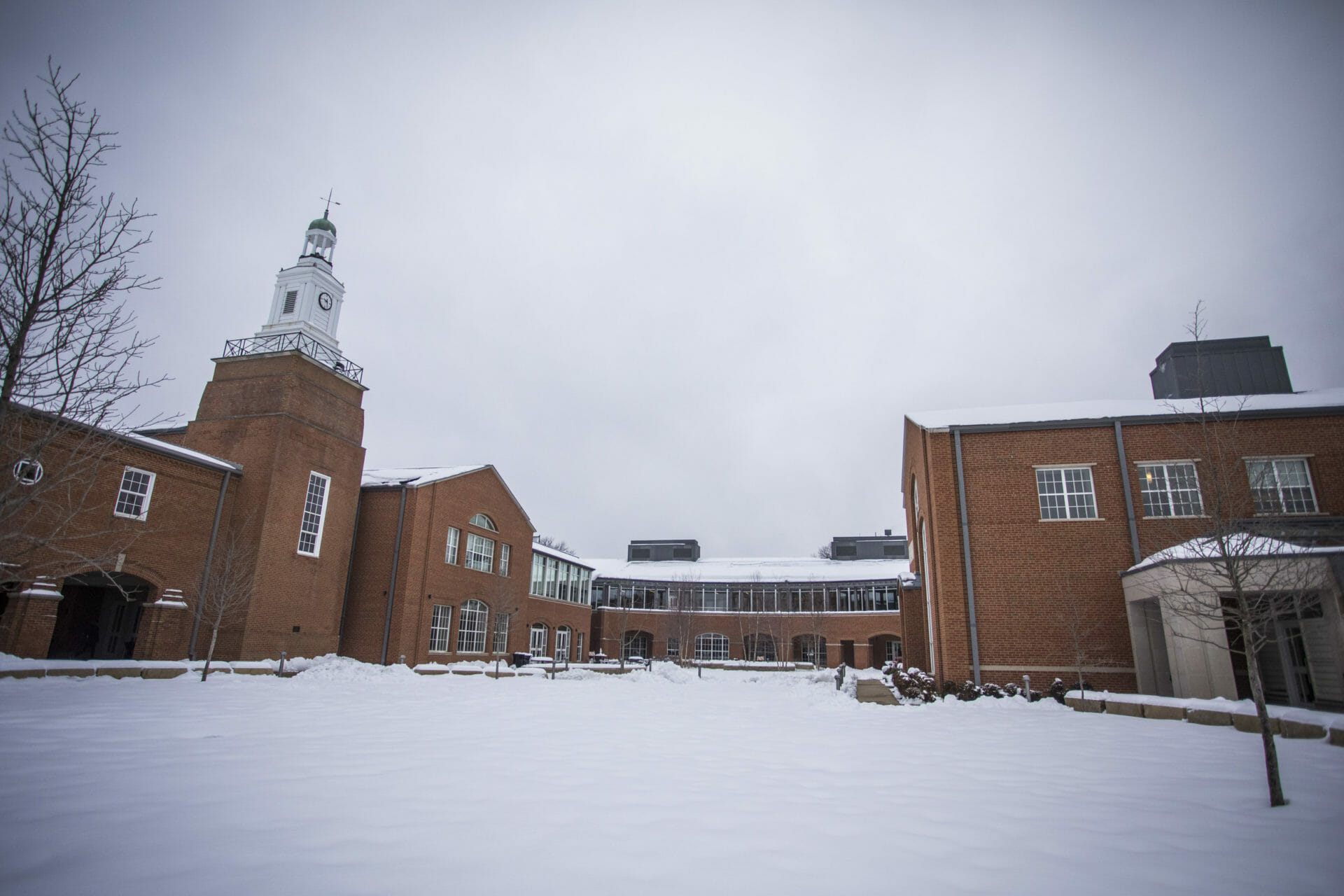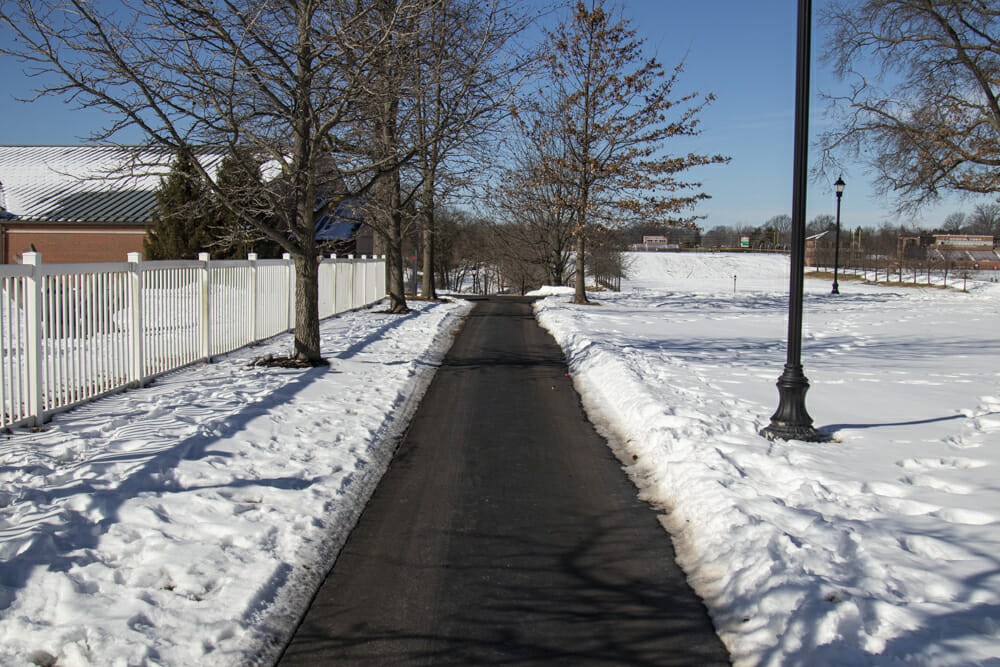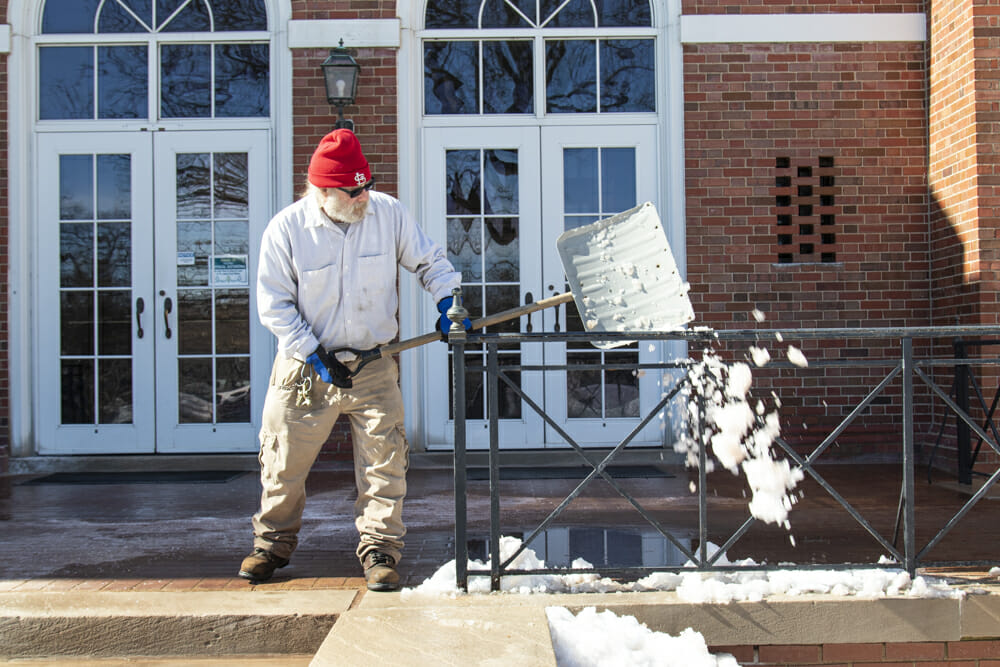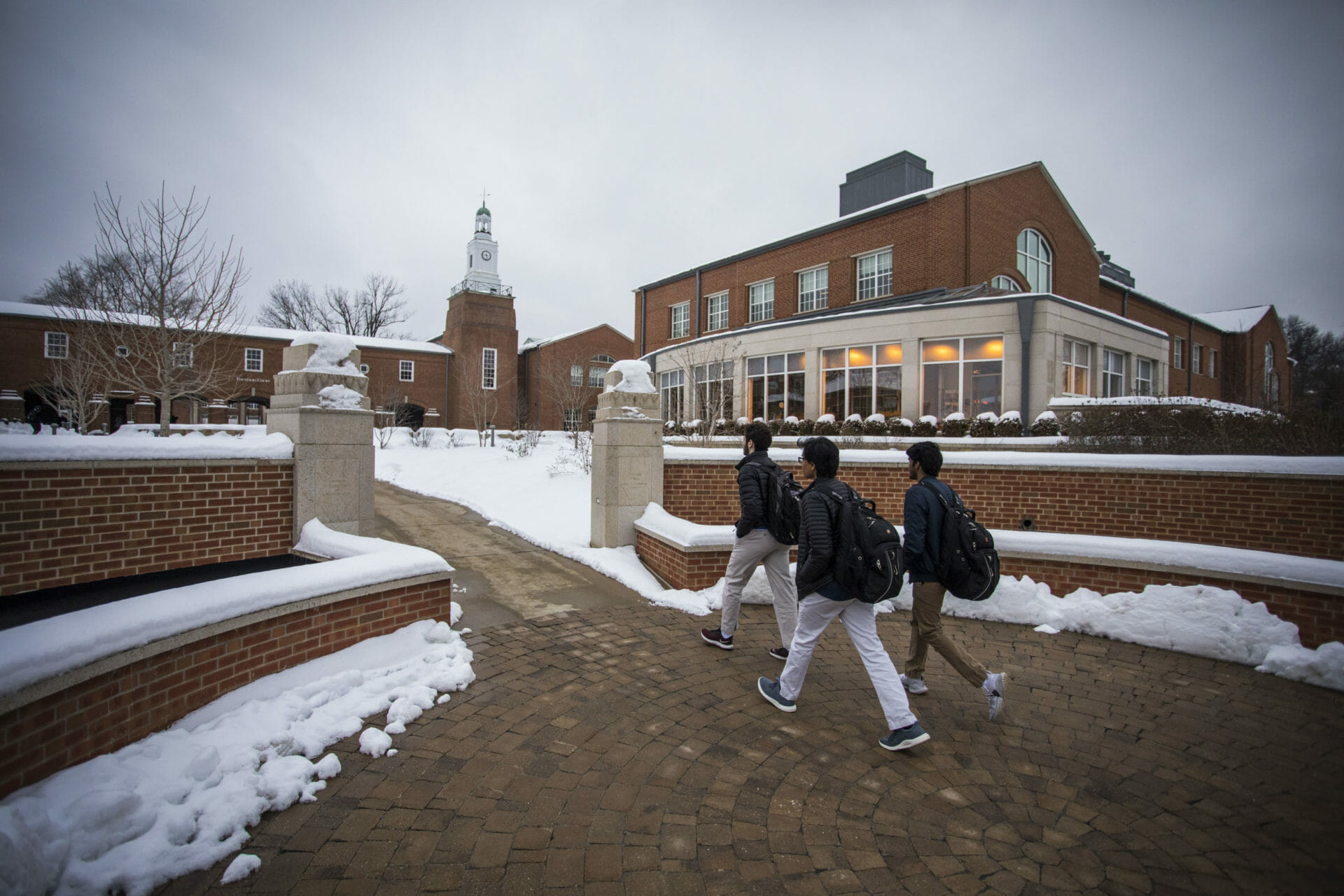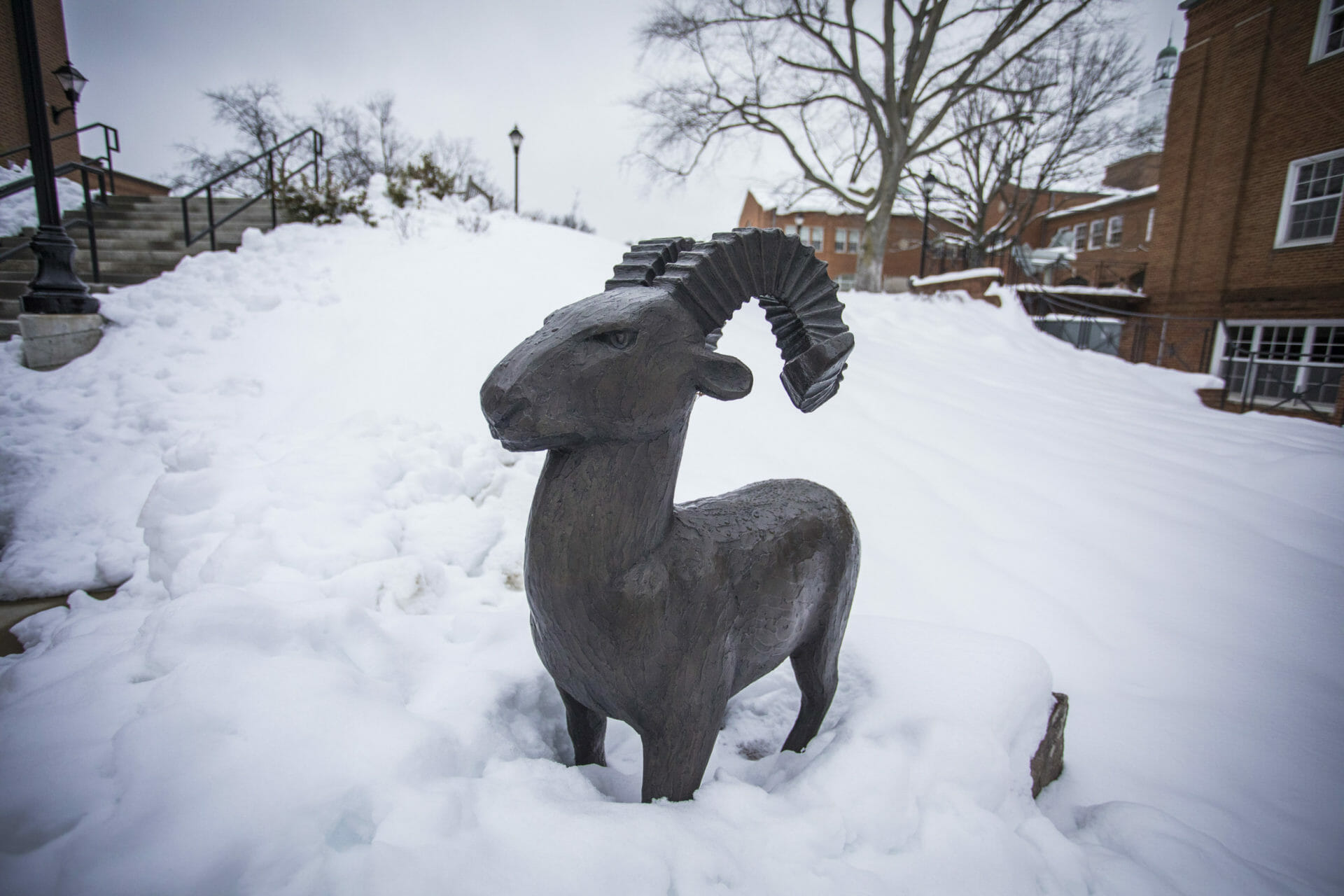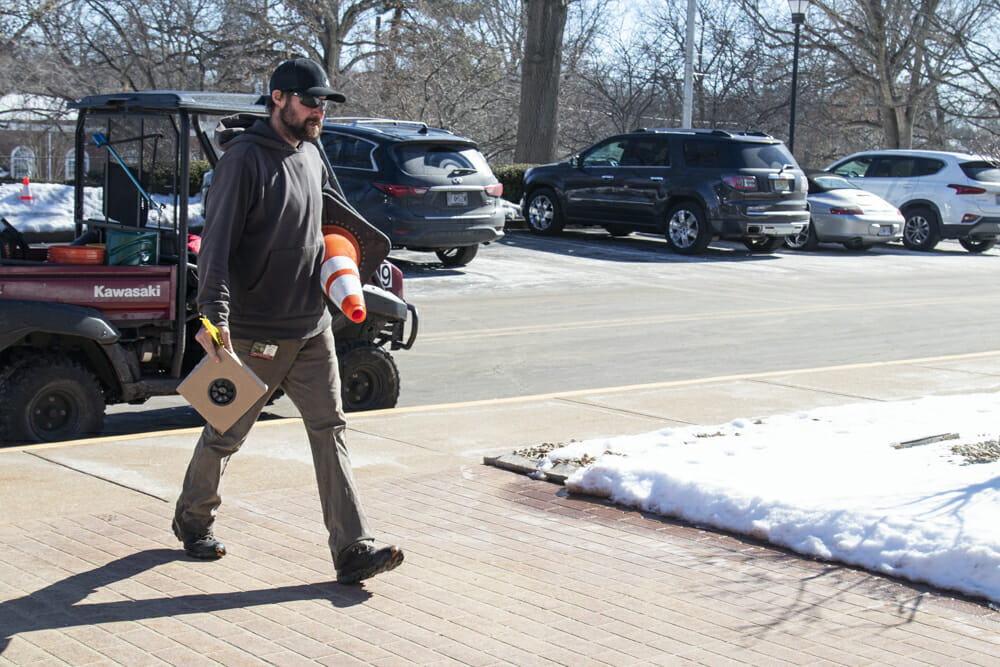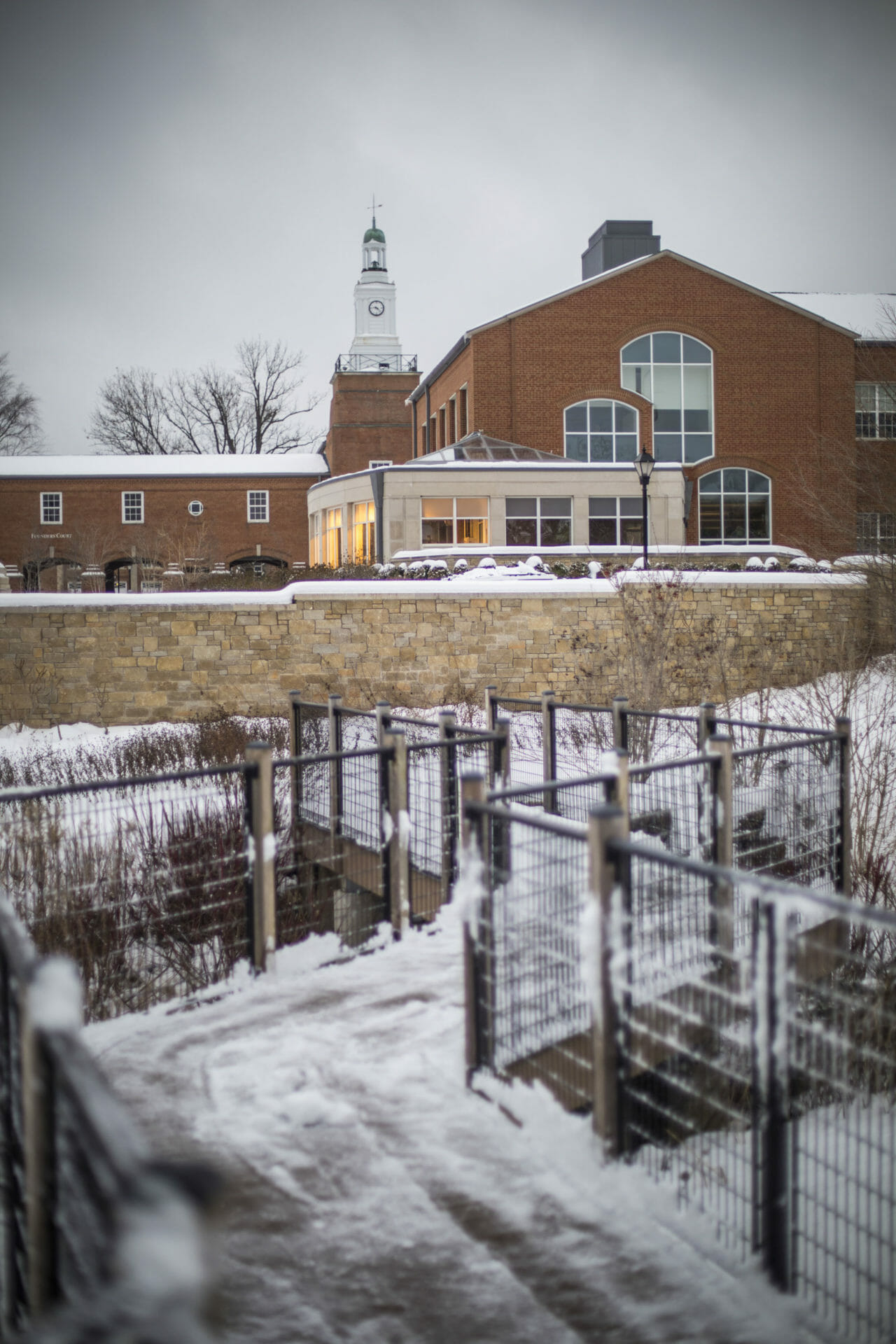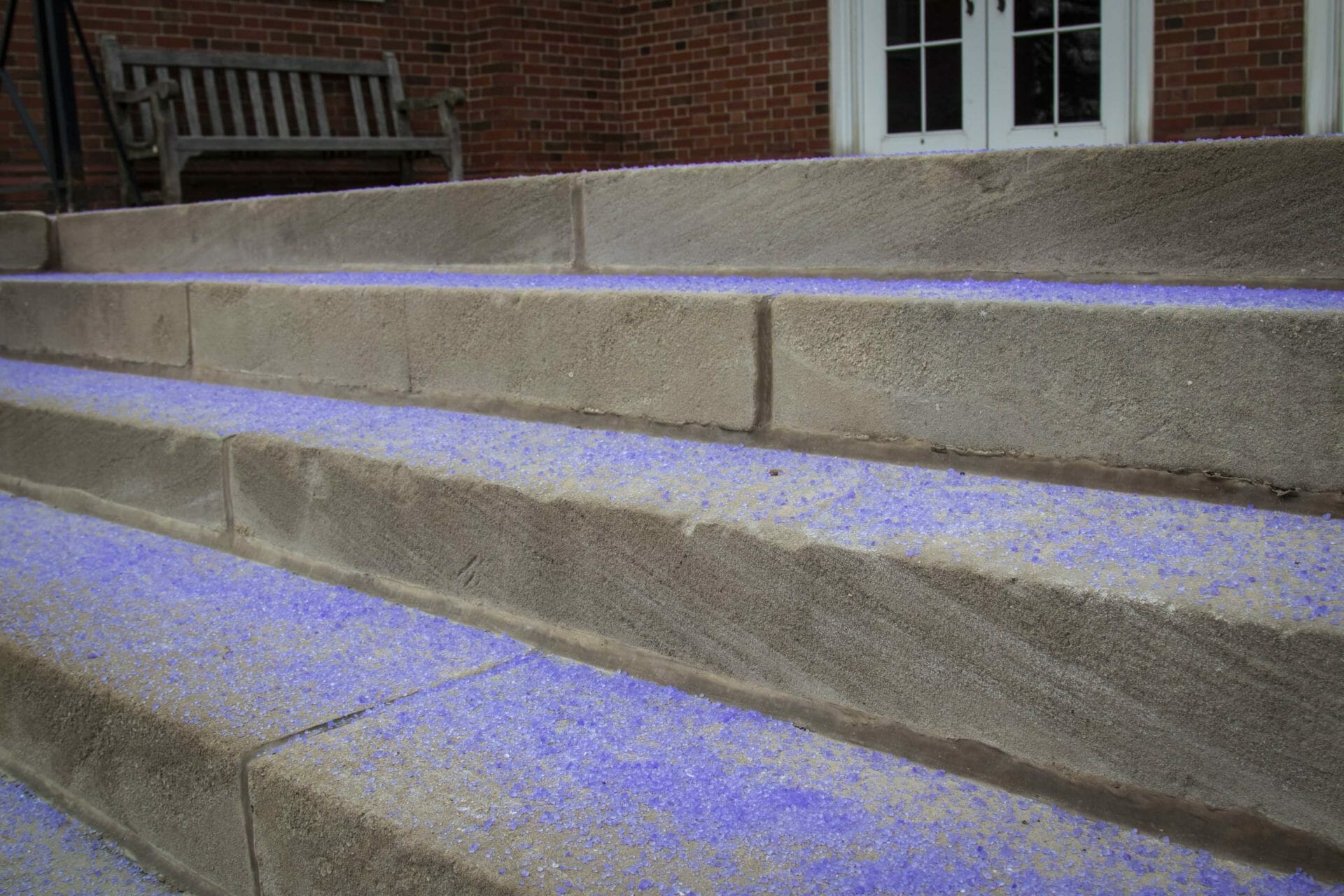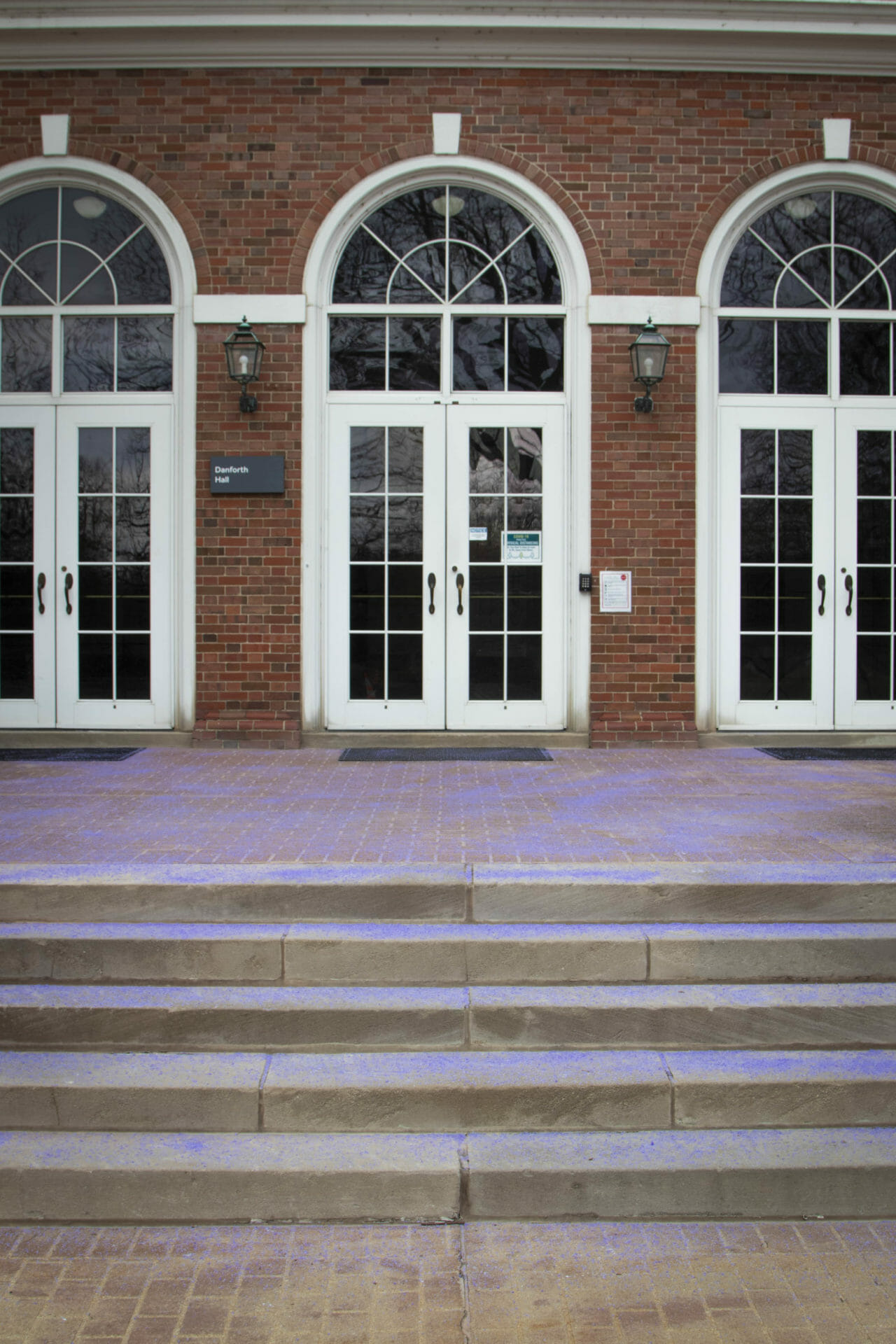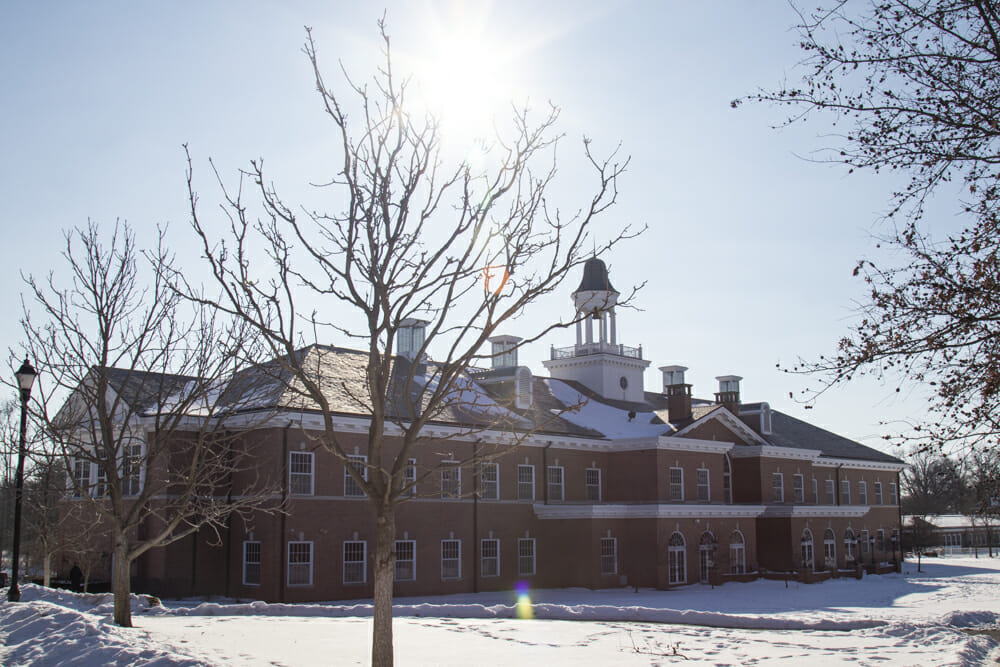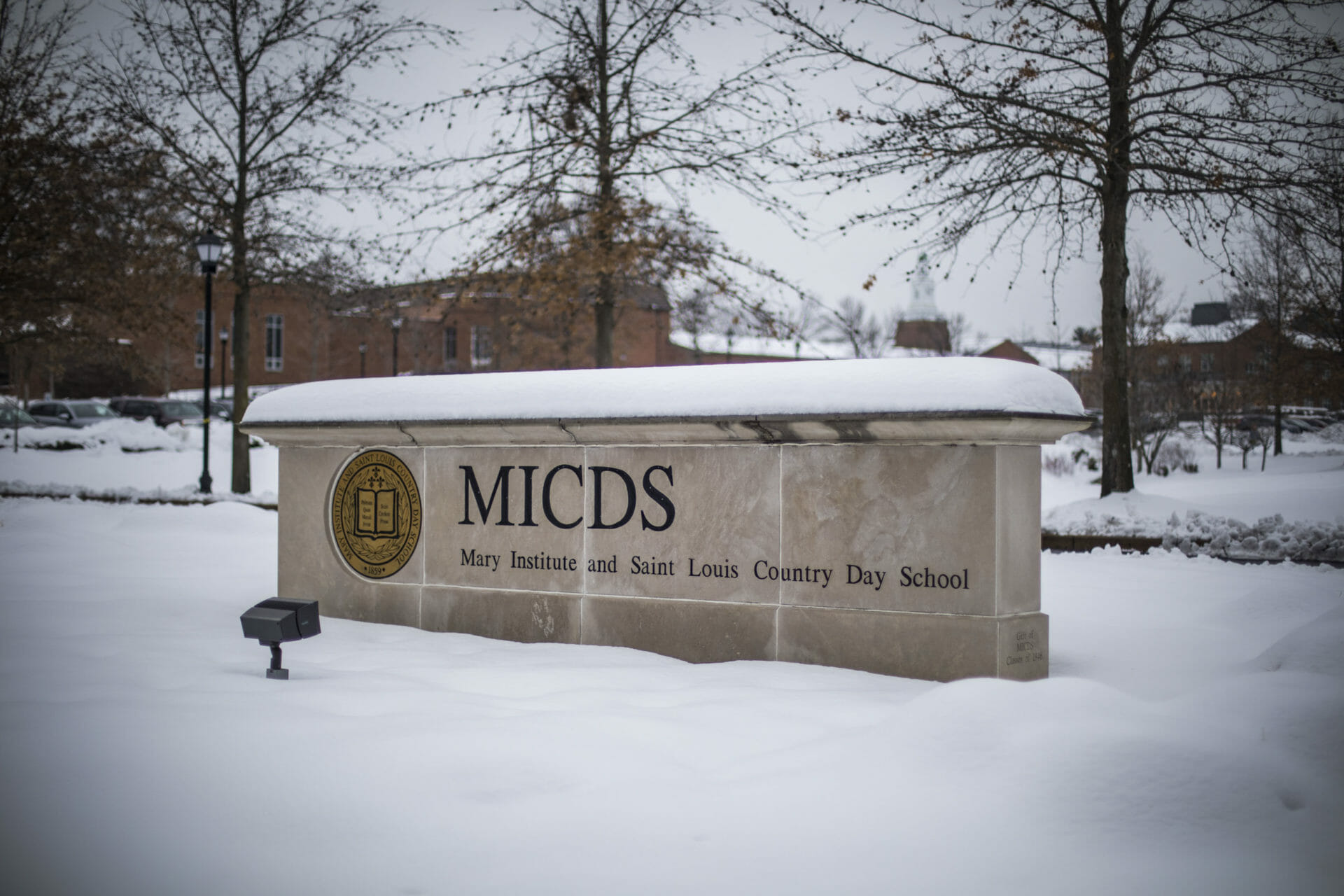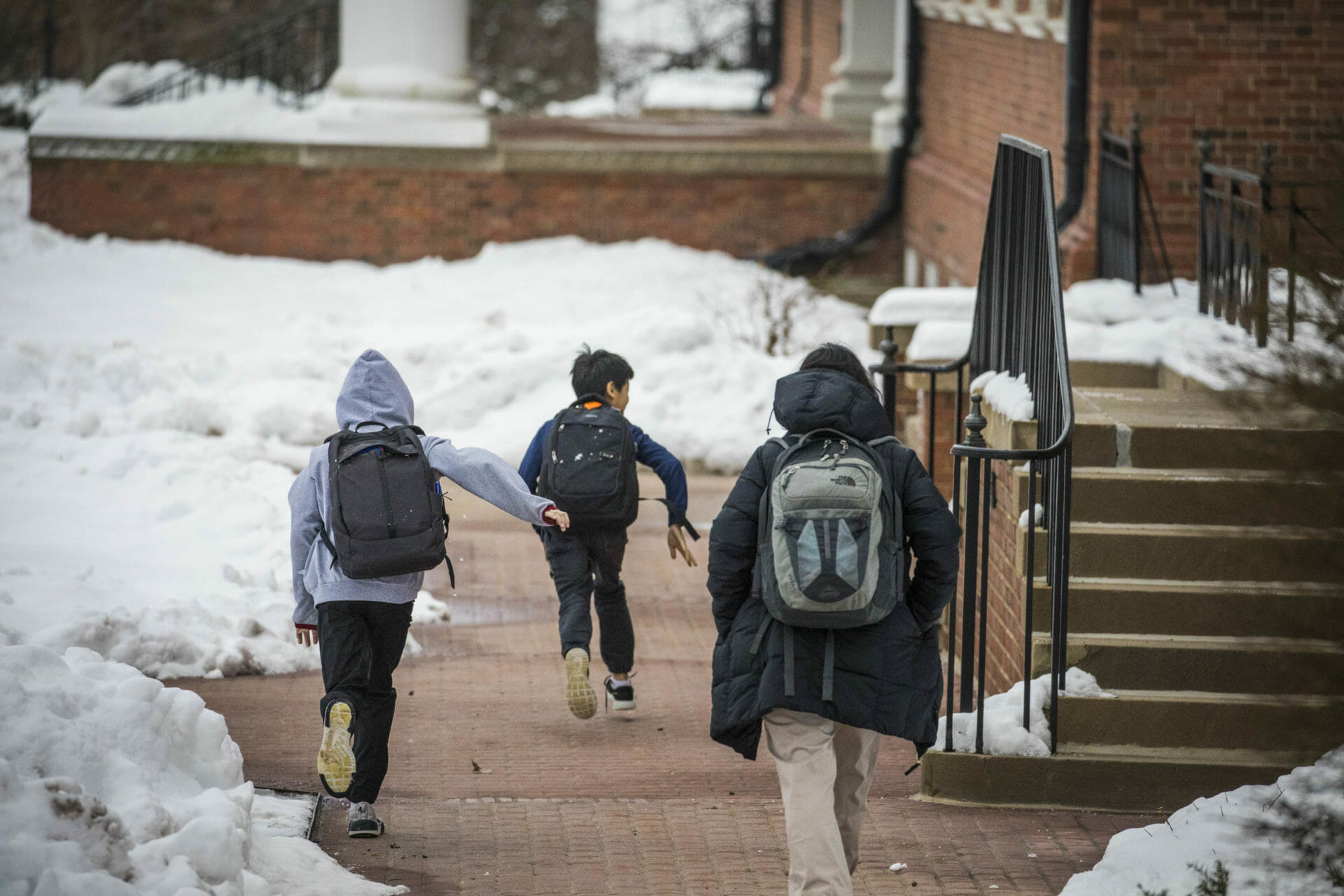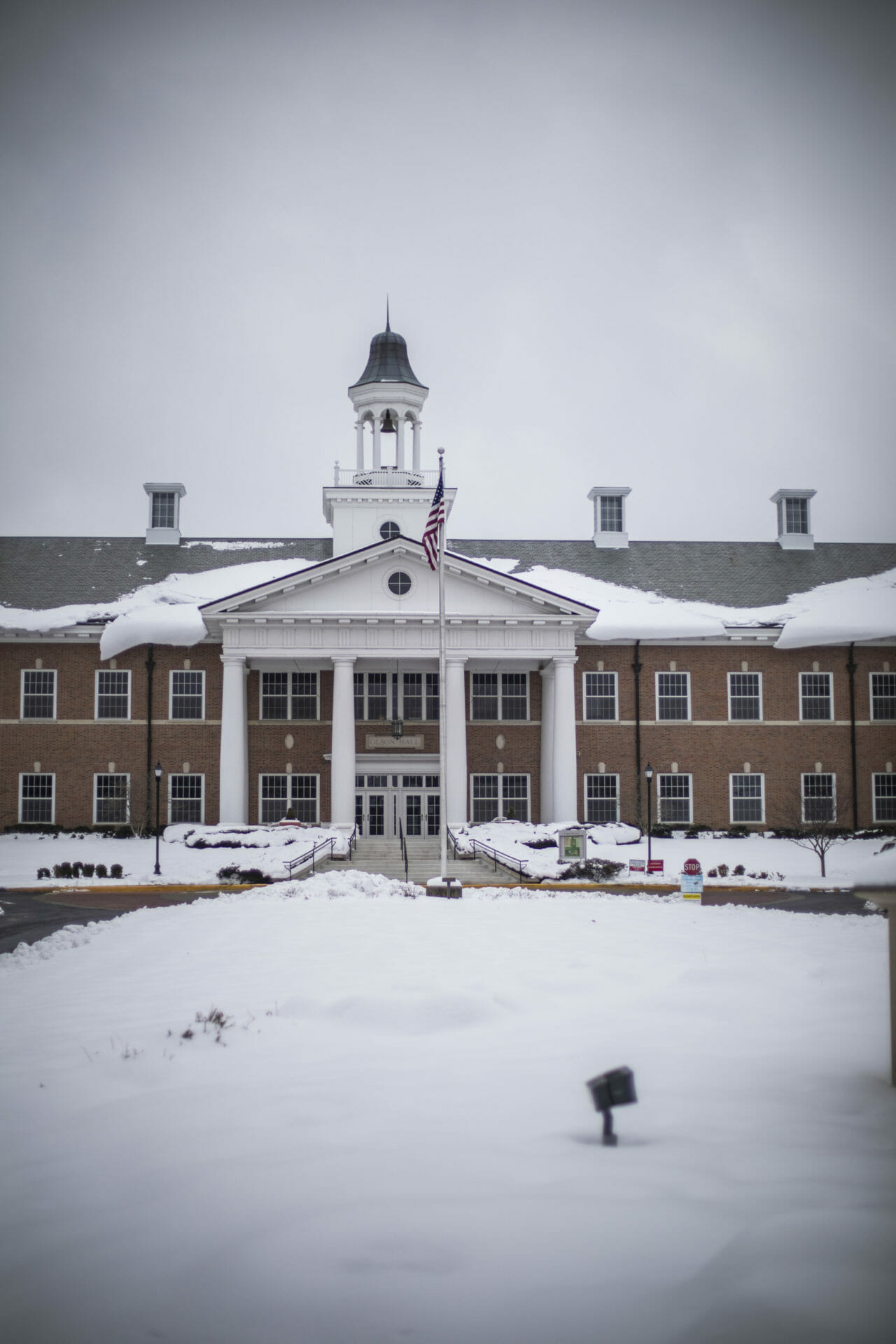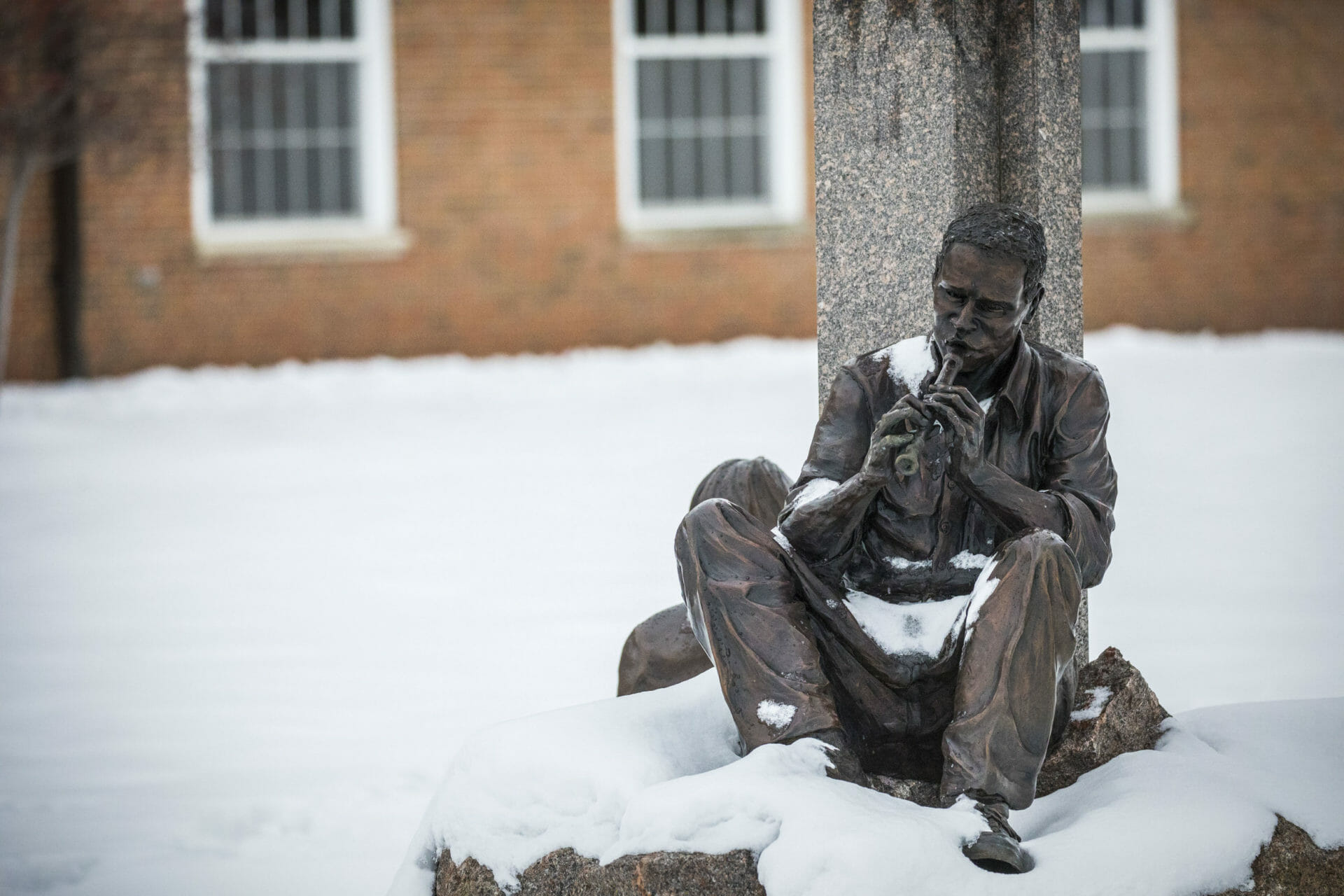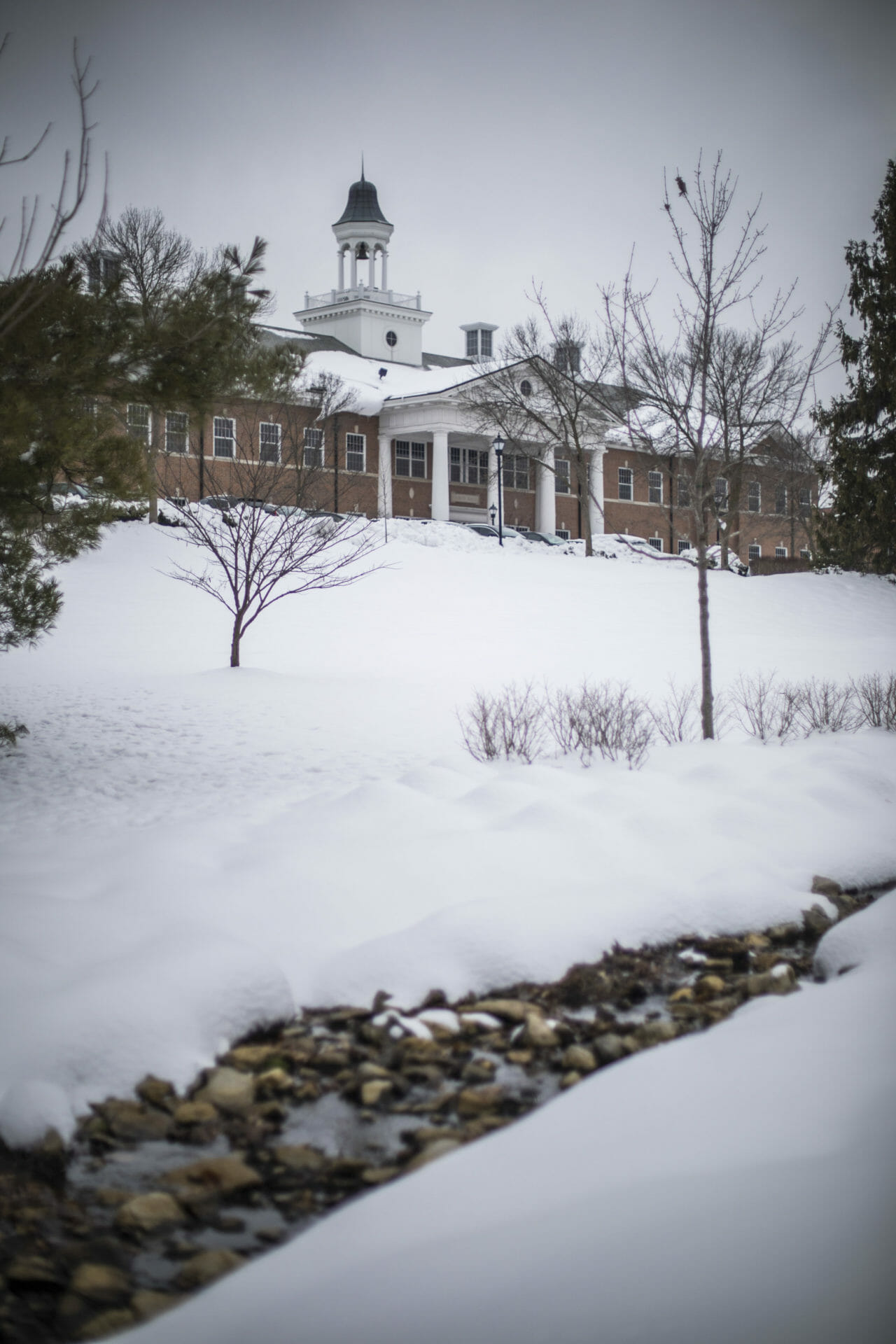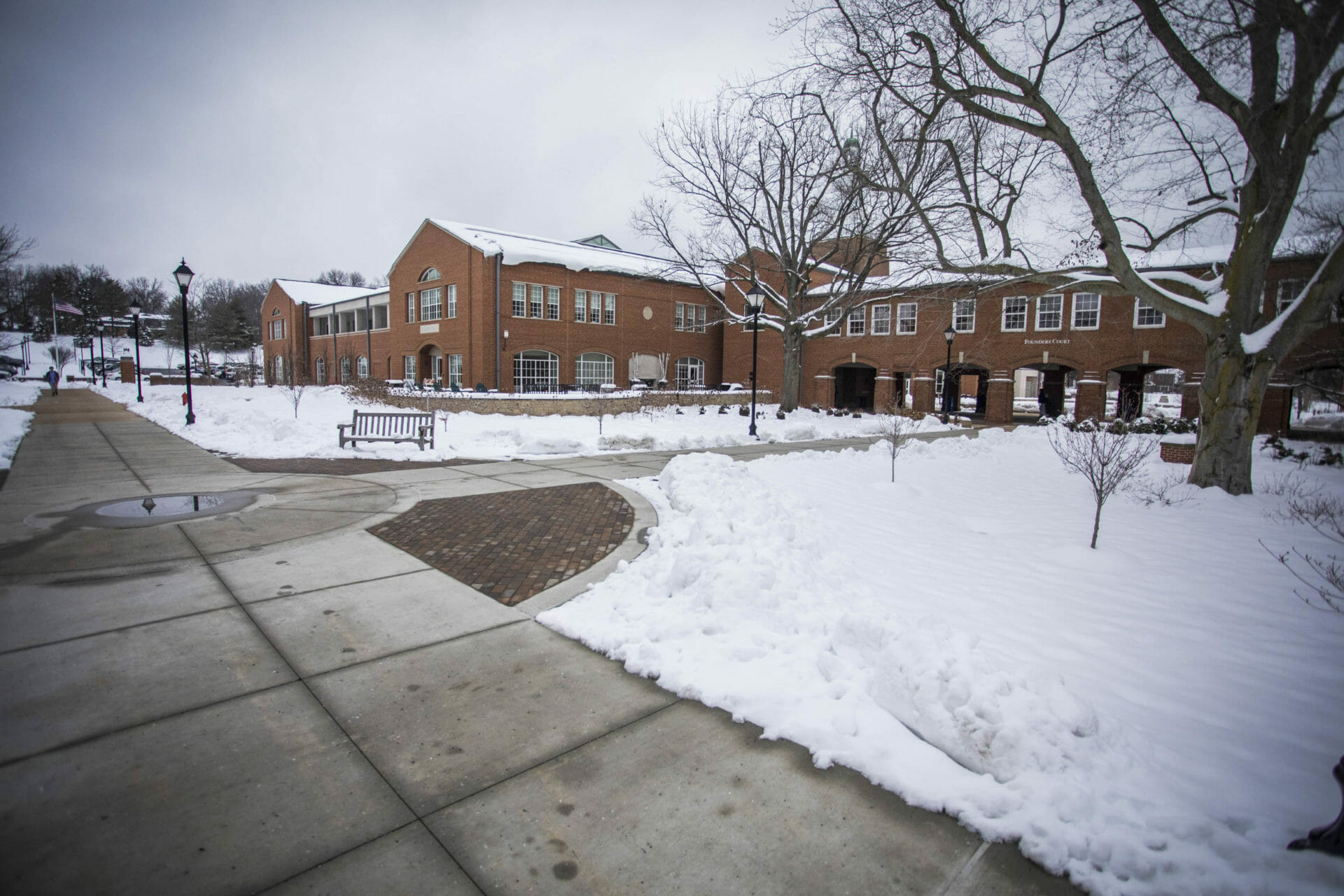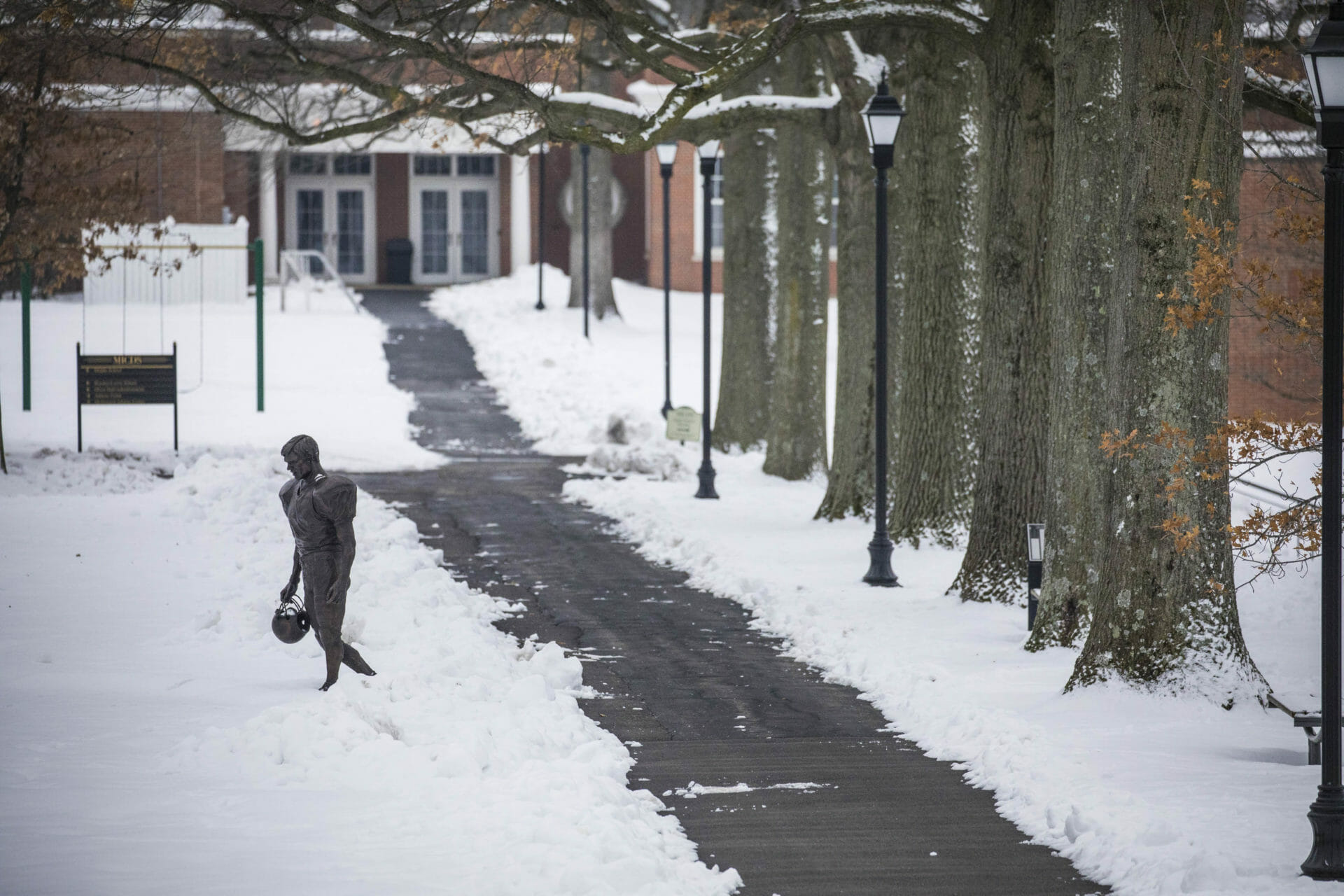When winter weather is in the forecast, students, faculty, and parents do a variety of actions to prepare for a potential snow day: putting spoons under pillows or in the freezer, adjusting lesson plans, rescheduling meetings, buying eggs, milk, and bread, or making a “snow day” case to Mr. Rainey via email.
Ever wonder who clears the parking lots and pathways when snow piles up on our 100-acre, snowcapped campus? When does the crew arrive? How much salt is used? Why are some pathways pink or purple? At the first sign of snow, the MICDS Facilities and Security teams are ready to spring into action to keep the campus clean and safe for its occupants.
Mark Sweeney, Director of Grounds, gave us an inside look into what it takes to clear campus, avoid accidents, and still find ways to enjoy a traditional snow day. “Timing is everything. The last storm was not normal with the timing and amounts of rain, sleet, and snow. It stretched out the storm, which kept us working through the weekend in preparation for the students and faculty to return on Monday.”
During this last storm, Sweeney’s team of seven arrived on campus each day between 4:00-5:00 a.m. and spent 183 combined hours over five days clearing sidewalks, paths, and entrances, along with managing piles and cleaning up. For the task, the MICDS team used 2,000 pounds of a beet juice/magnesium chloride mixture for melting, three plows attached to standard mowers, two push snow blowers, and one “Snow Joe” power shovel. An additional external crew is contracted for the parking lots and internal campus roads.
You might be wondering about the beet juice! Ever notice that pinkish/purple hue on campus walkways and snow piles? That’s beet juice combined with magnesium chloride, a type of salt used for rapid melting. When salt mixes with beet juice, the salt product clings to the sticky fluid, which reduces runoff and helps the de-icing process. It’s less corrosive to the campus ecosystem of plants, trees, and aquatic environments and works well in colder temperatures, especially when areas refreeze overnight.
Checking the interior areas of the school is critical as well. Director of Campus Security Tim White shared, “Even when school is closed, we have to pay particularly close attention to the heating, cooling, and refrigeration systems in all three divisions and monitor closed-off spaces. In addition, there are approximately 4.5 miles of walking to do by the on-duty officer to cover the entire campus, so the snow can definitely make it more challenging.”
After the campus is cleared and students and faculty are ready to return, the grounds crew still arrives a few hours early and spend an average of three hours handling re-freeze areas from the previous night. Then, they spend the rest of the day on usual tasks, cleaning up snow piles and widening areas for more access to foot and car traffic. In addition, the team works to reduce the amount of salt and slush that gets tracked into the buildings so that the housekeeping team has easier cleanup and reduced corrosion of indoor flooring materials.
So does the crew ever get a snow day like the rest of us? “After the campus is clear, we get to go home for the day, so that’s nice, but we do have to come back the next morning,” Sweeney said. “The biggest challenge is when the weather service gets it wrong, and we have more or less than expected, but the biggest bonus is when school is closed and we don’t have to work around vehicles and pedestrians.” (It sounds to us like that’s a vote in the snow day column!)
A huge and heartfelt thank you to our Facilities, Maintenance, Grounds, Housekeeping, and Security teams for keeping our campus safe, clean, and accessible 365 days a year!
